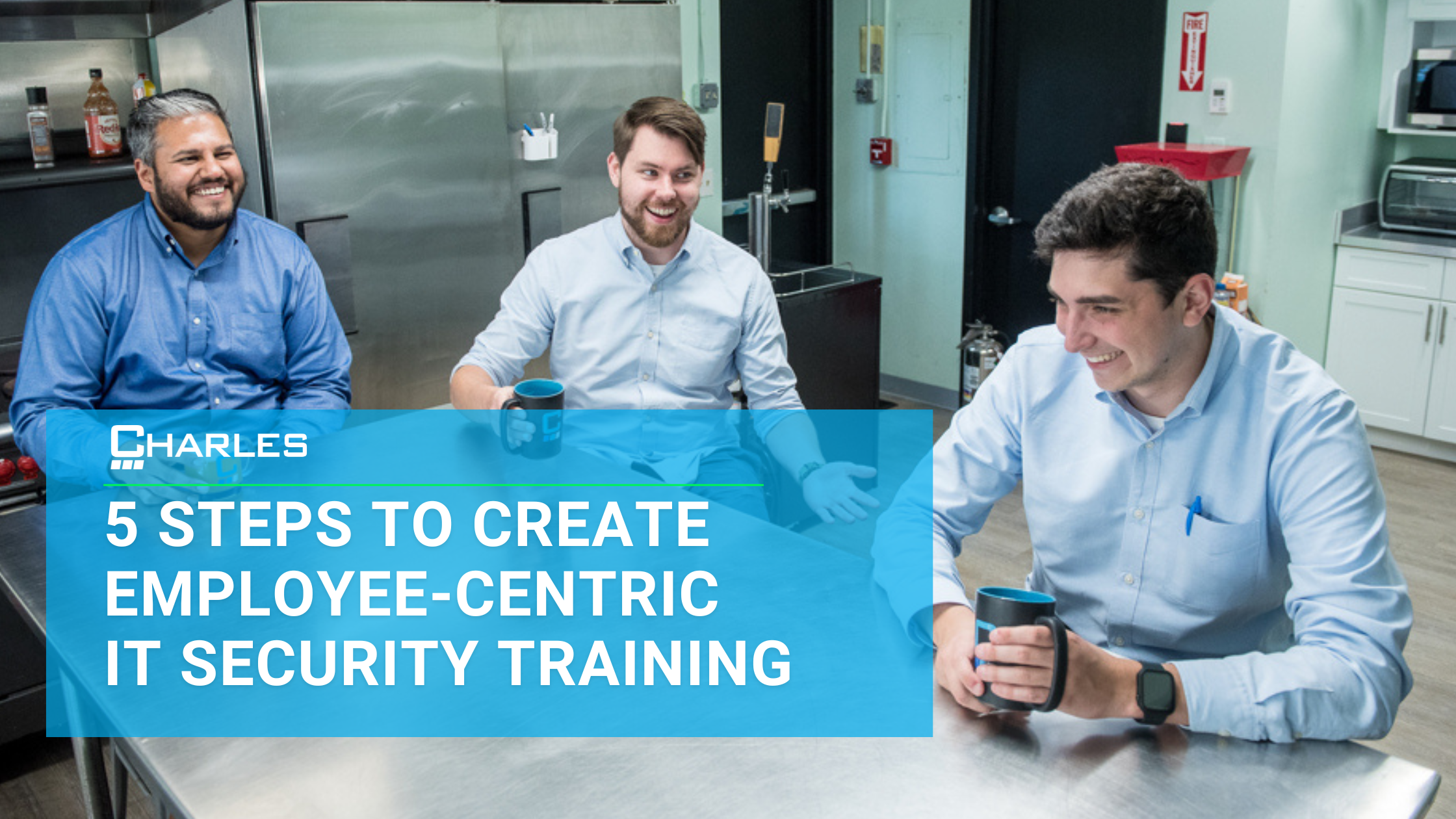
In today's digital world, businesses of all sizes are under constant threat of cyberattacks. According to a recent report by the Ponemon Institute, the average cost of a data breach increased from $4.24 million in 2021 to $4.35 million in 2022.
According to the 2022 Verizon Data Breach Investigations Report, 82% of breaches involved the "human element". This is important because social engineering attacks are one of the most common form of cyber attack that target your employees individually. One of the best ways to protect your business from cyberattacks is to provide your employees with comprehensive IT security training. However, not all IT security training is created equal. In order to be effective, IT security training must be employee-centric.
Here are five steps to creating employee-centric IT security training:
Establish a baseline of employee cybersecurity aptitude
Before you can start training your employees on IT security, you need to know where they stand. This means conducting a cybersecurity assessment to determine their current knowledge and understanding of IT security risks and best practices.
where they stand. This means conducting a cybersecurity assessment to determine their current knowledge and understanding of IT security risks and best practices.
A cybersecurity assessment is a crucial step in ensuring that your IT security training is tailored to the specific needs of your employees. It allows you to identify any knowledge gaps or areas of weakness within your workforce. By conducting this assessment, you can gain valuable insights into the strengths and weaknesses of your employees' cybersecurity aptitude. This will not only enhance the effectiveness of your training but also save time and resources by avoiding unnecessary training in areas where your employees are already proficient.
Make training engaging
If you want your employees to actually learn from your IT security training, it-1.png?width=375&height=328&name=make%20training%20engaging%20(1)-1.png) needs to be engaging. This means using a variety of learning methods, such as interactive exercises, games, and simulations.
needs to be engaging. This means using a variety of learning methods, such as interactive exercises, games, and simulations.
Gamifying training has been on the rise in corporate environments everywhere within the last few years. Let's face it - regular trainings are boring, games aren't boring. Giving your employees milestones and incentives to finish the training will cause them to be more attentive and likely to fully complete the trainings.
Include real-world simulations
To truly educate employees about the risks of IT security, it's crucial to immerse them in real-world simulations. This might include orchestrating a simulated phishing attack or allowing employees to practice their response to a ransomware incident. By engaging employees in hands-on exercises like these, they can gain practical experience and develop the skills necessary to defend against cyber threats.
Train on timely cyberattacks
As the digital landscape continues to evolve, it is vital to keep your employees updated on the latest cyberattacks. This entails regularly updating your training materials and ensuring that your employees are informed about emerging threats. Stay proactive in providing them with the necessary information to protect your business effectively.
updated on the latest cyberattacks. This entails regularly updating your training materials and ensuring that your employees are informed about emerging threats. Stay proactive in providing them with the necessary information to protect your business effectively.
Something that may help this, if you don't have an internal IT team or bandwidth to continuously update trainings, is outsourcing to a third party security training organization.
Personalize training
Every employee is unique, with varying levels of experience and knowledge in IT security. To ensure that your IT security training is effective, it is crucial to personalize the training for each individual. This entails creating tailored training modules that cater to different levels of experience and allowing employees to engage in self-paced learning. By providing personalized training opportunities, you can empower your employees to enhance their IT security skills at their own pace and enable them to contribute effectively to your business's cybersecurity efforts.
In addition to the steps above, here are some other tips for creating effective IT security training:
- Make sure the training is relevant to the employee's job role.
- Use clear and concise language.
- Provide opportunities for hands-on practice.
- Keep the training fun and engaging.

- Evaluate the training to ensure it is effective.
Remember, cybersecurity is an ongoing process, and regular assessments will help you stay ahead of evolving threats and ensure that your employees are equipped with the knowledge and skills to protect your business. Your team is your first line of defense against a cyberattack on your company - the chain is only as strong as it's weakest link!
If you're interested in implementing security awareness training for your employees, contact Charles IT today to see how we can help!

.png)

